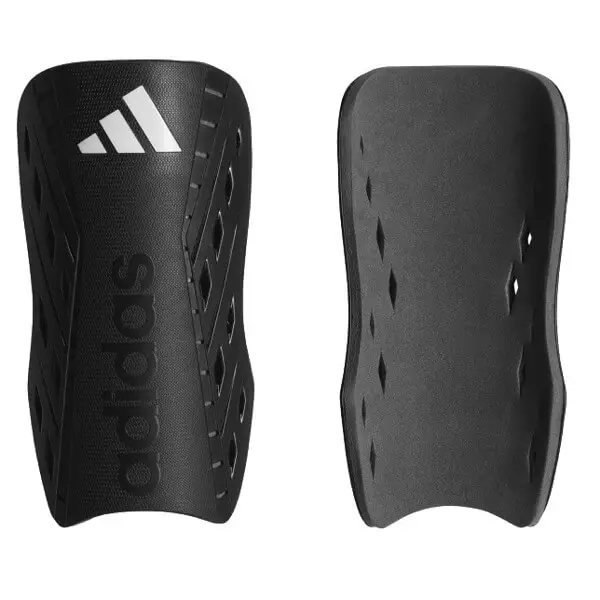As a soccer player or enthusiast, you may have heard the terms shin guards and shin pads used interchangeably. However, there is a difference between the two, as well as variations in usage based on regional preferences.
In this article, we will explore the differences between shin guards and shin pads while shedding light on the terminology variations seen in the United States and the United Kingdom.
Let’s get started.
Differences between Shin Guards and Shin Pads
The main difference between shin guards and shin pads is the level of protection they provide. Shin guards are made of hard plastic or carbon fiber and provide maximum protection against impact and collisions. Shin pads, on the other hand, are made of softer materials and provide moderate protection against minor impacts and abrasions.
Another difference between shin guards and shin pads is their size and weight. Shin guards are larger and heavier than shin pads and can be uncomfortable for players who prioritize mobility and speed. Shin pads are lightweight and flexible, making them ideal for players who want to move freely without being weighed down by bulky gear.
Shin Guards: Maximum Protection and Common in the USA
In the United States, the term “shin guards” is predominantly used to describe the protective gear worn by soccer players.
Shin guards are typically made of hard plastic or carbon fiber, providing maximum protection against impact and collisions during the game.
These guards feature a foam backing for cushioning and absorption of impact, ensuring the safety of players’ shins.
Shin guards come in different shapes and sizes, depending on the player’s age, position, and level of play. Younger players and beginners typically use smaller shin guards that cover only the front of the shin. More advanced players, especially defenders, usually use more giant shin guards that extend to the ankles for added protection.
There are two types of shin guards: slip-in and ankle guards. Slip-in shin guards are the most common type and are worn under socks. They are easy to put on and take off and provide adequate protection for most players. Ankle guards, on the other hand, are designed to provide additional ankle protection.
==>> You can also read: How do you pick shin guards for soccer?
Shin Pads: Lightweight Alternatives and Popular in the UK
In the United Kingdom, the term “shin pads” is more commonly used to refer to protective gear for soccer players.
In effect, when people in the UK refer to shin pads, they mean shin guards, the ones with complex material.
Shin pads, also known as shin sleeves, offer a lightweight and flexible alternative to traditional shin guards.
Made from softer materials like neoprene, spandex, or polyester, shin pads provide moderate protection against minor impacts and abrasions. They are often worn alone or under or above socks, offering players greater mobility and comfort on the field.

Shin pads provide a lightweight and comfortable alternative to traditional shin guards, making them a popular choice among players who prioritize mobility and comfort.
They are available in different materials, including neoprene, spandex, and polyester. They come in different sizes and can be adjusted for a snug fit.
Shin pads provide moderate protection and are suitable for players who do not engage in high-contact play or who are not required to wear full shin guards according to their league’s rules.
Understanding the Terminology Differences
While shin guards and shin pads serve the same purpose of protecting players’ shins, the terminology used can vary based on geographical location and cultural preferences.
The term “shin guards” is predominantly used in the United States, reflecting the popularity of this terminology within American soccer culture.
On the other hand, “shin pads” are more commonly used in the United Kingdom, aligning with the linguistic preferences of British soccer enthusiasts.
When to Wear Shin Guards vs. Shin Pads
The decision to wear shin guards or shin pads depends on the level of play, the position played, and the player’s preference.
According to FIFA rules, all players are required to wear shin guards during official matches, regardless of their position or level of play.
Shin guards provide maximum protection and are recommended for players engaged in high-contact play or those who are prone to injuries.
Shin pads, on the other hand, are suitable for players who engage in low-contact play or those who are not required to wear full shin guards according to their league’s rules. Shin pads are also ideal for players who prioritize mobility and speed and do not want to be weighed down by bulky gear.
Wrap Up
In conclusion, shin guards and shin pads are two different types of protective gear used by soccer players to protect their shins from injuries. Shin guards are made of hard plastic or carbon fiber and provide maximum protection against impact and collisions. In contrast, shin pads are made of softer materials and provide moderate protection against minor impacts and abrasions.
The decision to wear shin guards or shin pads depends on the level of play, the position played, and the player’s preference.
Whether you refer to them as shin guards or shin pads, the primary goal remains the same: safeguarding players’ shins and allowing them to enjoy the beautiful game with confidence and peace of mind.

